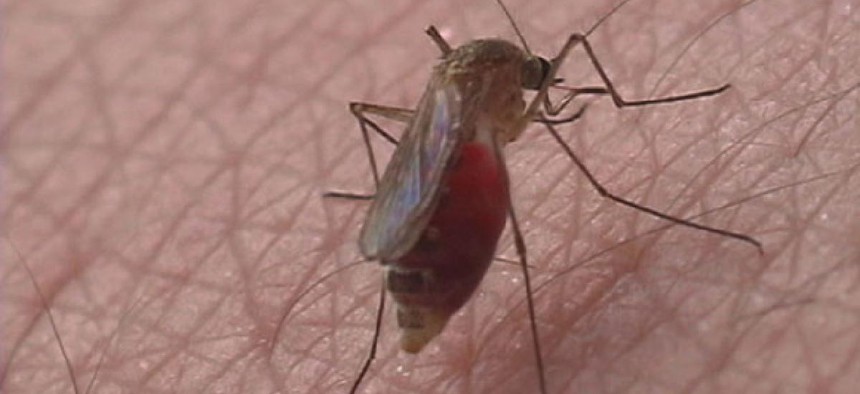Insect-spying technology tops military entomology wish list

Mosquitoes can carry many diseases, including malaria. AP photo
Tool will assess threat of vector-borne disease outbreak among ground troops.
Insect-spying technology tops the Pentagon’s list of research priorities for military entomologists, a contract document reveals, and the agency currently is seeking ideas on how to build such tools.
The Defense Department is funding the creation of a “novel device to perform surveillance on adult insect disease vectors,” according to a small business solicitation. The goal is to develop a self-powered tool that can assess the probability of outbreaks of malaria, dengue fever and other insect-transmitted diseases among ground troops.
The envisioned tool would be a “freestanding, lightweight, compact, portable sampling device” that collects a broad spectrum of disease-transmitting insects, such as mosquitoes and sandflies.
It will fill in the gap where outdated and commercially available technology has fallen short.
The U.S. Centers for Disease Control and Prevention light trap, developed in the mid-20th century, is the main tool deployed by the military to assess the threat of mosquito and sandflies, yet it “has been virtually unchanged since the 1960s” and “is recognized to have serious flaws in its ability to provide reliable, accurate vector surveillance,” the document notes. Newer devices that attract insects with chemical cues -- such those present in human skin secretions -- may not be self-powered or as portable.
“A vector surveillance tool that is broadly effective, reliable, and portable will fill a major gap in our ability to accurately characterize the threat of vector borne disease in military operations,” notes the solicitation.
NEXT STORY: FTC wants in on Google antitrust action





